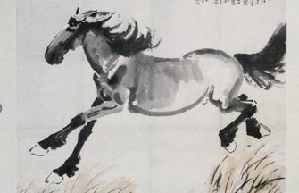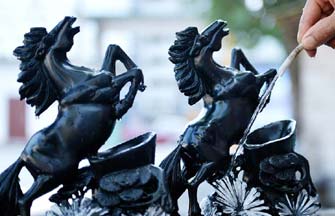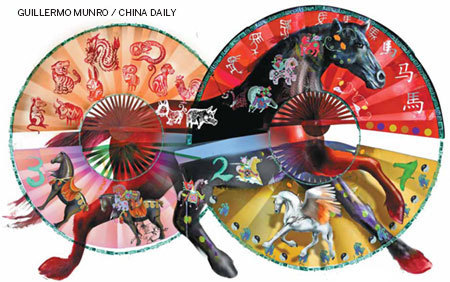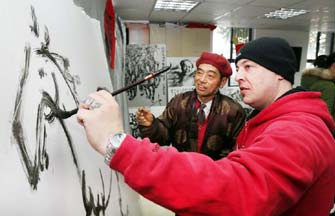From the horse's mouth, literally
 |
|
|
 |
Yao Shaoshuang has been the most photographed horse rider in China in the past month. Donning a cowboy hat and boots for three days, he rode a black horse from his workplace in Pixian to the city of Dujiangyan, where his mother-in-law lives, after failing to secure a bus ticket for Spring Festival travel. (The county and city lie to the northwest of Chengdu, the provincial capital.) His image appeared all over the Internet, and Yao said he received hundreds of calls, including interview requests, from the media. Apart from his inability to obtain a ticket, Yao said he made his trip on horseback as he was eager to reach his destination and to impress his in-laws on his first visit to his wife's family.
In Chinese, there is a common word, mashang, literally "on horseback" and means "right away" or "fast". It was clearly not coined after modern modes of transportation were invented. But the irony in 24-year-old Yao's case is that he covered the 70 km in three days, slower than most hikers.
The truth, when it emerged, proved to be an anti-climax. Yao works for an equestrian club and the horse he was riding was a Dutch Warmblood (a horse of medium build designed for sports) from the Netherlands worth half a million yuan ($82,000).
Normally, such an expensive import would not appear on a hard, asphalt road, but this may also explain the ultra-slow speed, complete with numerous photo opportunities.
Moreover, the journey was a publicity stunt, not for himself but for a business.
Yao, a local equestrian sports champion, kept quiet. However, other clubs said they had received requests from advertisers who wanted to get in on the horseback bandwagon, but owners could not bear to see their costly investments stray far from soft grass and well-maintained stables. Some even viewed Yao's actions as animal abuse.
Good humor
The fad for placing objects on horseback in the hope of fulfilling financial dreams started rather innocuously and in good humor, but quickly transformed into materialistic vulgarity.
Blessings and good wishes were quickly replaced by hard cash, such as placing a wad of banknotes on horseback. Since real horses proved hard to come by, enlarged toy horses were used. People even piled miniature houses on the horses in a desperate bid for the financial wherewithal to purchase apartments.
One man, with a touch of ingenuity, reportedly placed a pair of toy elephants on top of a toy horse, because the Chinese word for "date" has "xiang" in it, which can be stretched to encompass the elephant.
If you let a smaller horse piggyback on a larger one, it could mean that the object of your desire is a BMW, as the German car has a vague Chinese transliteration as "precious horse".
Word games involving the horse appear frivolous, but often have cultural and historical connotations. Chinese like to describe being victimized by foreign invasion as being trodden under iron hooves.
In Chinese history, the economically developed and culturally sophisticated Han majority on the central plains were repeatedly attacked and pillaged by northern tribes.
Part of the reason, many scholars believe, was the mode of travel used by the nomads. While they swooped down in an iron-hoofed stampede, the Han could only flee on foot. Hence, the vivid depiction of being trampled.
For more X-Ray, click here
- Pony tales for the new year
- Exhibition held for Year of the Horse in Nanjing
- Xi'an museum displays horse culture
- Horse theme a hit with artists
- Hoof it to Life Hub for equine art
- Liaoning museum showcases horse paintings
- Year of the Horse porcelain designs
- Winter Naadam festival displays horse culture
- Paper cutting: Year of the Horse




















